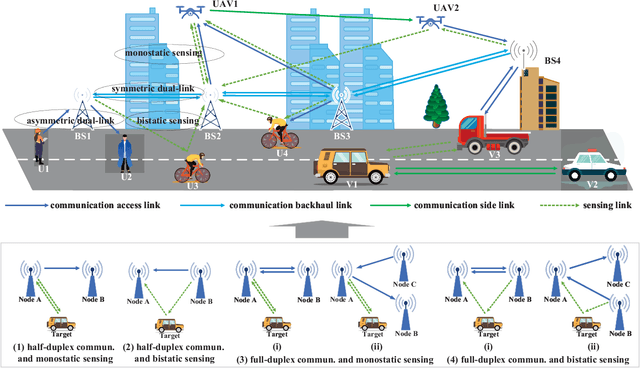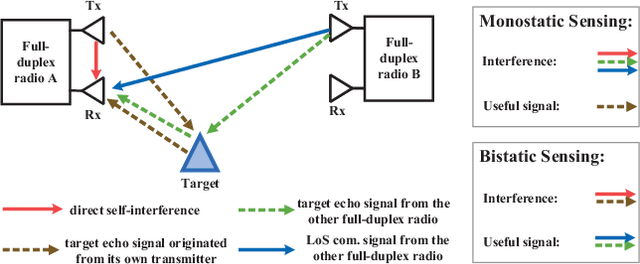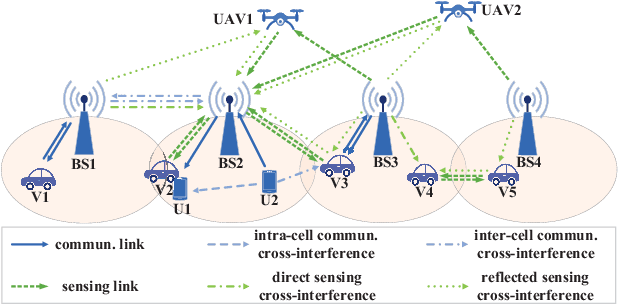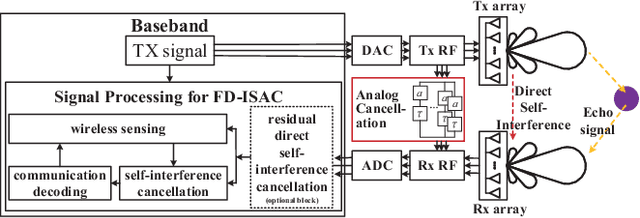Interference Management for Full-Duplex ISAC in B5G/6G Networks: Architectures, Challenges, and Solutions
Paper and Code
Apr 09, 2024



Integrated sensing and communications (ISAC) has been visioned as a key technique for B5G/6G networks. To support monostatic sensing, a full-duplex radio is indispensable to extract echo signals from targets. Such a radio can also greatly improve network capacity via full-duplex communications. However, full-duplex radios in existing ISAC designs are mainly focused on wireless sensing, while the ability of full-duplex communications is usually ignored. In this article, we provide an overview of full-duplex ISAC (FD-ISAC), where a full-duplex radio is used for both wireless sensing and full-duplex communications in B5G/6G networks, with a focus on the fundamental interference management problem in such networks. First, different ISAC architectures are introduced, considering different full-duplex communication modes and wireless sensing modes. Next, the challenging issues of link-level interference and network-level interference are analyzed, illustrating a critical demand on interference management for FD-ISAC. Potential solutions to interference management are then reviewed from the perspective of radio architecture design, beamforming, mode selection, and resource allocation. The corresponding open problems are also highlighted.
 Add to Chrome
Add to Chrome Add to Firefox
Add to Firefox Add to Edge
Add to Edge